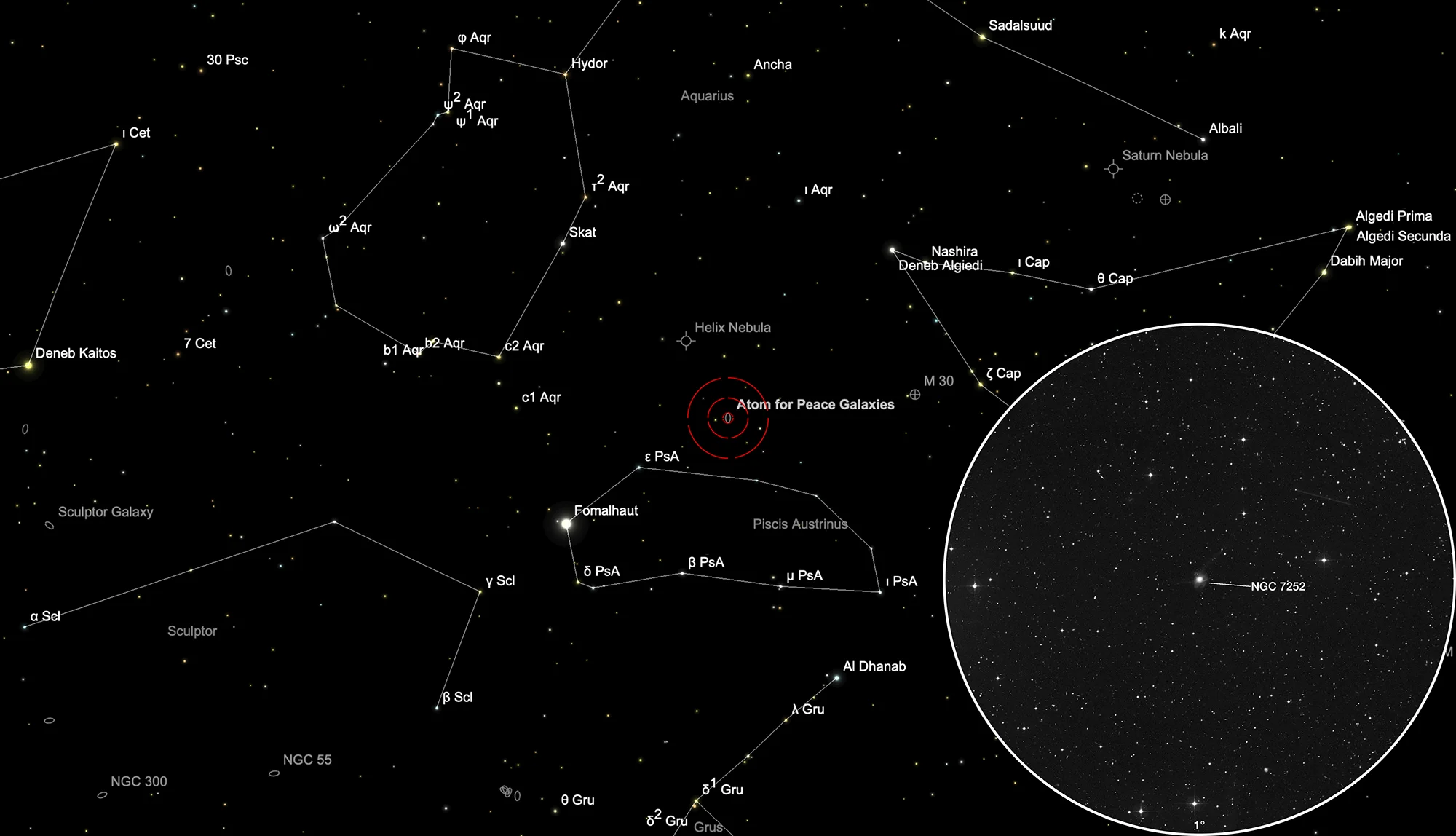Atoms for Peace Galaxy (NGC 7252)

History
On 26 October 1785 William Herschel discovered a «very faint nebula» which he cataloged as III 458. He noted: «very faint, small, easily resolvable, time inaccurate.» [463] Dreyer listed this galaxy as NGC 7252 in his 1888 «New General Catalogue» [313]
The galaxy received the nickname «Atoms for Peace Galaxy» because it resembles a model of an atom with a nucleus and orbiting electrons. The name originated with a 1953 speech by Eisenhower launching the «Atoms for Peace» program, promoting nuclear power for peaceful purposes. [164]
In Halton Arp's 1966 «Atlas of Peculiar Galaxies», the galaxy NGC 7252 is listed with Arp 226 in group #221-226 as an example for a galaxy with amorphous spiral arms. He noted: «Loops, filamets at various angles.» [199]
Physical Properties
NGC 7552 is of a pair of galaxies undergoing interaction and merging. The intricate dance of gravitational forces is evident in the elongated tails formed by streams of stars, gas, and dust. Remarkable shells have developed as a result of gas and stars being pulled away from the colliding galaxies and wrapping around their shared core. While some material was expelled into space, other regions underwent compression, triggering episodes of intense star formation. This led to the creation of numerous very young star clusters, ranging from 50 to 500 million years old, speculated to be the precursors of globular clusters. Situated approximately 220 million light-years away, this galaxy may offer a glimpse into the future of our own Milky Way: in three or four billion years, the Milky Way and the Andromeda Galaxy will collide. [164]
| Designation | NGC 7252 |
| Type | Gx (SB0) |
| Right Ascension (J2000.0) | 22h 20m 44.8s |
| Declination (J2000.0) | -24° 40' 42" |
| Diameter | 2.1 × 1.7 arcmin |
| Photographic (blue) magnitude | 12.1 mag |
| Visual magnitude | 11.4 mag |
| Surface brightness | 13.2 mag·arcmin-2 |
| Position Angle | 119° |
| Redshift (z) | 0.015984 |
| Distance derived from z | 67.52 Mpc |
| Dreyer Description | F, S, R, er |
| Identification, Remarks | WH III 458; h 3934; GC 4780; ESO 533-15; MCG -4-52-36; Arp 226; IRAS 22179-2455; PRC D-35; AM 2217-245; Atoms for peace galaxy |
Finder Chart
This galaxy is located in the constellation Aquarius. On 27 August it is in opposition to the Sun and crosses the meridian at local midnight. The best observation time is in the months of April to January.
